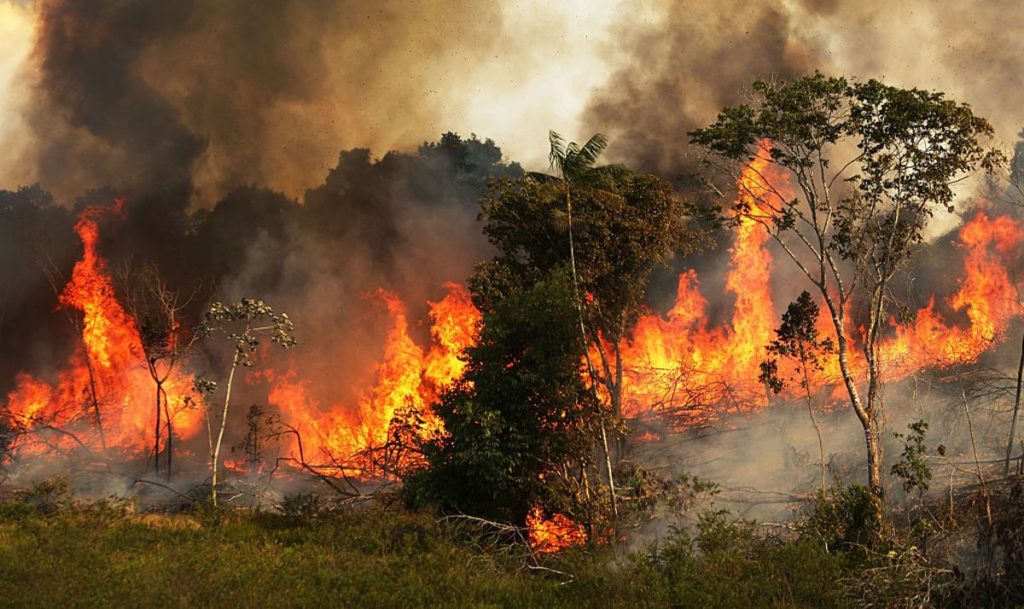Inaction isn’t an option as global warming accelerates.

It’s critical for the U.S. to reduce its own carbon emissions to help combat this threat. A number of Democratic politicians have released sweeping plans to do this. But decarbonizing the U.S. economy won’t be enough to prevent catastrophic warming, for two reasons. First of all, U.S. emissions are already dwarfed by the rest of the globe, and the disparity is increasing as developing nations catch up with rich-world living standards.
But even more importantly, much of the world is moving in the wrong direction. As part of its Belt and Road global development initiative, China is building coal plants in developing countries around the world. That threatens not just to increase emissions, but to create infrastructure around coal power in those countries that could lock them into reliance on fossil fuels as they industrialize. Meanwhile, fires are raging through the Amazon rainforest at a record pace, thanks in part to Brazilian President Jair Bolsonaro’s weakened environmental protections and arson by ranchers eager for more land. The Amazon’s trees are vital for pulling carbon out of the air, so clearing of the ancient forest will accelerate climate change even more.
If the U.S. merely stays in its corner of the world and attends to its own emissions problem, it will have at most a marginal impact on the progress of climate change. This is a global crisis, and it needs global solutions. One approach is to use international accords like the Paris Agreement, which the U.S. unwisely withdrew from in 2017. We need more agreements like this, and there are plenty being proposed. But the failure of most nations to meet their Paris emissions targets, combined with lax requirements for developing nations, shows that this approach by itself is insufficient.
But there are several steps the U.S. can take to encourage other nations to reduce their emissions, even as it cuts its own.
The most obvious step is to directly transfer green energy technology to less advanced nations. This can be done through international institutions like the United Nations Framework on Climate Change, and with bilateral agreements with countries like India. The most important technology is improved energy storage, for use when wind and solar can’t generate power.
A second approach is to subsidize U.S. exports of green technology and low-carbon products, including green energy, storage, smart grids, building conversion kits and low-carbon cement and steel. This would include helping finance foreign purchases of these products. If the rules of the World Trade Organization forbid such subsidies, then the rules should be rewritten. This idea sometimes is referred to as a Green Marshall Plan, and has been touted by some of the current crop of presidential candidates.
A more dramatic version of this strategy is to pay developing countries to build green-energy infrastructure like flexible power grids, electric-vehicle charging stations and energy storage facilities — even if these products aren’t made in the U.S. This could be done through the same channels by which rich countries now offer official development assistance, or through the Green Climate Fund. Green infrastructure would help lock newly industrializing nations into using carbon-free energy sources.
Another idea, proposed by economist Bard Harstad, is for the U.S. and other rich countries to buy up coal deposits around the world and leave it in the ground. This will raise the price of coal relative to greener alternatives, and help prevent developing countries from building their infrastructure around coal. It also would assure that much of the fossil fuel in the world never gets burned.
Finally, there are more punitive measures. Carbon tariffs would tax the emissions embedded in imports, discouraging other countries from using carbon-intensive energy and production processes. The U.S. could go further, threatening to cut trade with nations like Bolsonaro’s Brazil unless they implement more stringent conservation policies. European countries are already taking some steps in this direction.
This last step would be a harsh and extreme policy. In most cases, it doesn’t make sense for rich countries to hold poor ones to their own environmental standards. But climate is an exception, because Brazilian deforestation and Chinese coal construction affect the entire globe. And the U.S. certainly shouldn’t seek to punish other countries for reckless environmental policies until it implements its own serious program of rapid emissions reductions. Yet in the end, steps like this may be necessary, since there’s only one Amazon rainforest in the world.
None of these policies is likely to be politically possible as long as Donald Trump is president, but after his departure a window for action may open. Any ambitious, comprehensive climate plan must address the international aspect of the problem.
Article Credit: bloomberg
